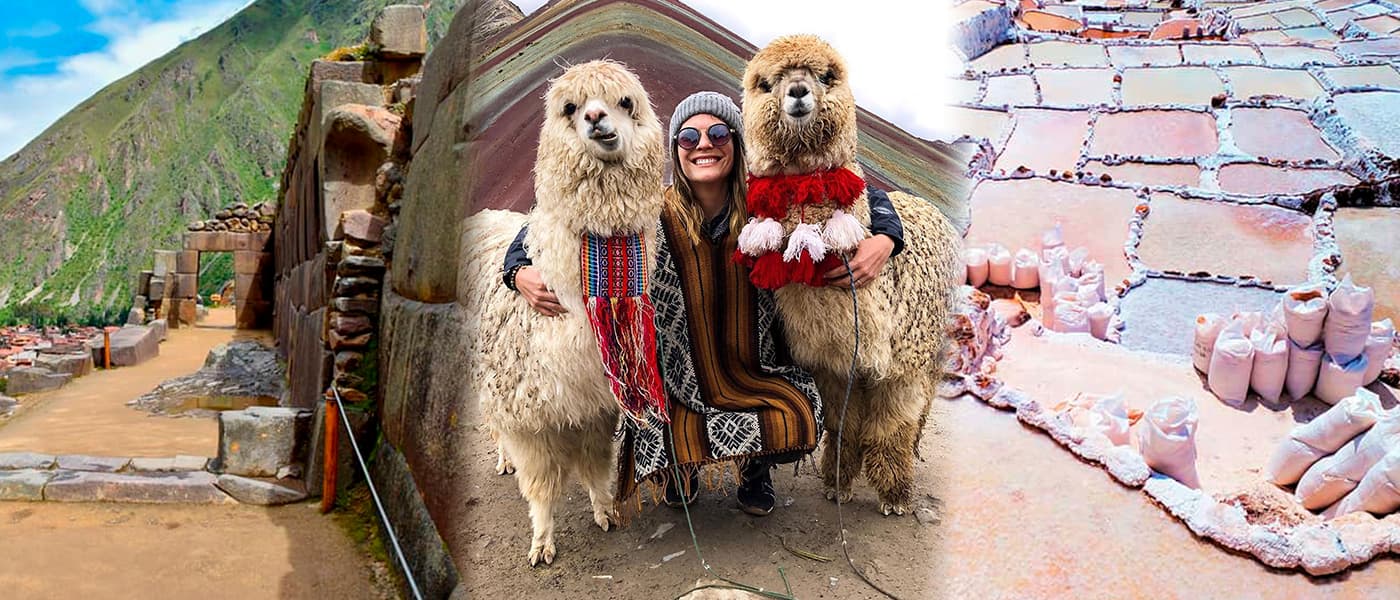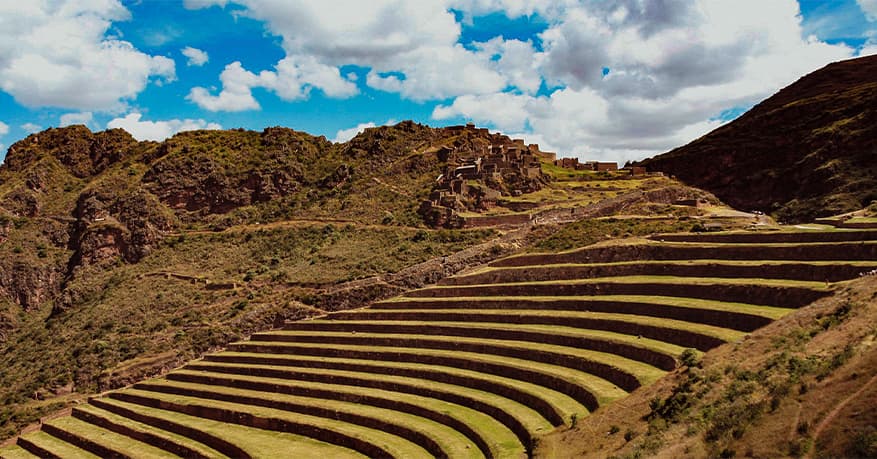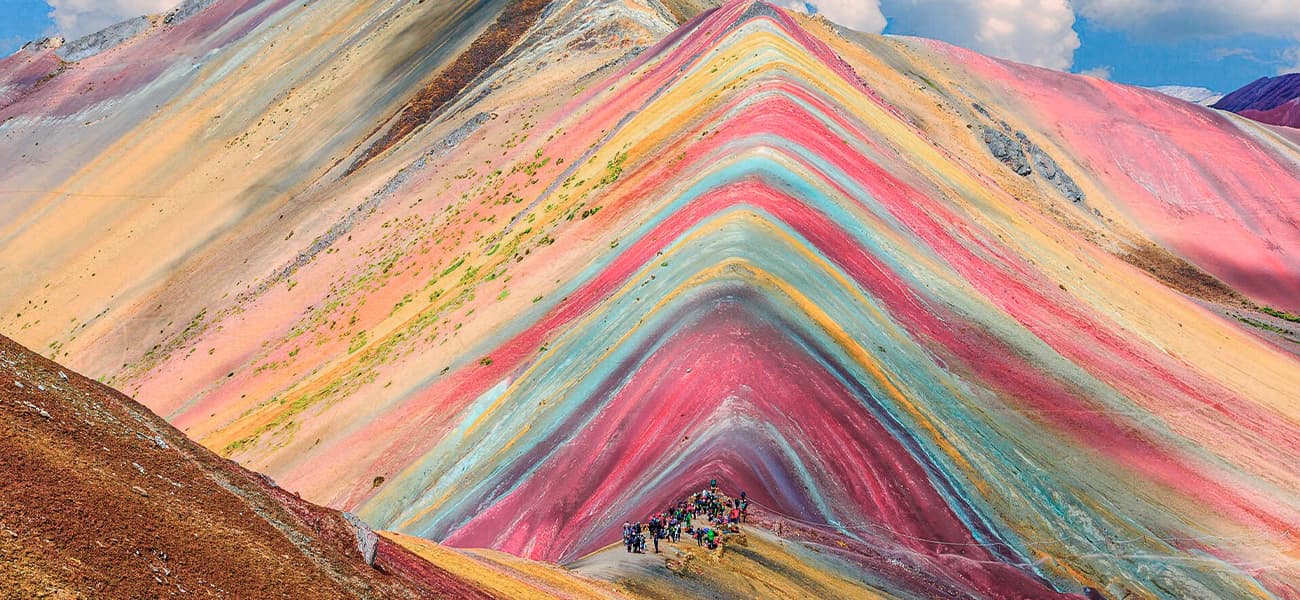What to See, Do and Visit in the Sacred Valley Cusco?

Pretty much everybody that goes to Peru will visit Cusco and Machu Picchu. Sandwiched between them is the wonderful fertile Sacred Valley of the Incas, full of unexpected delights. It would be easy to spend a week here, the climate being warmer than Cusco and the accommodation generally more spacious. Most hotels and guest houses have gardens full of flowers and hummingbirds, there are walks on the doorstep, small market towns, Inca ruins aplenty.
When you’re not delving into nature, you can learn fascinating Inca facts and dive into the Andean lifestyle. Spend some time learning about what role textiles are believed to have played in Andean culture, partake in a traditional earth oven meal or explore one of the many ruins dotting the Incan land. Through any of these experiences, you’ll have a chance to meet the local people (and the local llamas) of the traditional villages and open your eyes to a truly enchanting world.
Climate & Weather for the Sacred Valley
The highland climate of the Sacred Valley has rather consistent temperatures throughout the year. Atop high mountain summits, like Salkantay, temperatures are cold enough to sustain snow year round. The climate is much more temperate far below on the valley floor where towns such as Pisac, Urubamba and Ollantaytambo reside.
Dry Season Vs. Rainy Season
Distinct to Peru’s Andean region, the Sacred Valley has a dry and rainy season.
The dry season is from April to October.
- During these months, sunshine is regular with a minimal chance of rainfall.
- At night, temperatures drop significantly.
- Daytime Average: 68-72°F (20-22°C)
- Nighttime Average: 35-40°F (1.7-4.4°C)
The rainy season is from November to March.
- Cloudy mornings with light showers are typical and afternoons and evenings can bring heavier rains.
- January and February usually receive the most rainfall.
- On average, nighttime temperatures are warmer in the rainy season, colder in the dry season.
- Daytime Average: 68-70°F (20-22°C)
- Nighttime Average: About 45°F (7.2°C)
THE BEST TIME TO VISIT THE SACRED VALLEY: The Peak travel season in the Sacred Valley coincides with the dry season: June, July, and August. During this time, the weather is usually sunny and conveniently coincides with the summer months for travelers coming from the northern hemisphere. Given the high demand for services and limited Machu Picchu train and entrance tickets, it’s best to plan your trip early to ensure specific date availability.
WHAT PLACES YOU MUST SEE IN THE SACRED VALLEY?
WHAT PLACES YOU MUST SEE IN THE SACRED VALLEY?
Pisac: Handcraft Market

Pisac, located at 45 minutes from Cusco is an spectacular town in the middle of the Sacred Valley. You can get there by private transportation, one day tour or, by local bus. This town, is famous due its beautiful archeological site and its colorful local market.
Here you can admire the impresive waving talent, silver handcrafts and living culture! It is really common that the people in the andes live from their farms and handcrafts, so, If you can collaborate with them, please do!
Also, you can grab a bite! Enjoy the natural snacks of the andes like the Choclo con queso (corn with cheese) or the Empanadas (patties), very popular in the zone!
Royal Inca hotel: Pool time!
Just 5 minutes away from the bus station you will find the public pool of the Royal Inca Hotel!
Enjoy the sun and have an outdoor experience in the middle of the mountains. A truly must in case you have some free time in the area. You can also have a Delicious bbq as a lunch!
Pisac archeological site
The archaeological site of Pisac will undoubtedly take your breath away. This complex is known for its agricultural terraces and ancient Inca cemetery. It is usually the first stop on the Sacred Valley tour. Located just 45 minutes from Cusco in the picturesque town of Pisac, it holds a rich ancestral Inca history. To enter this archaeological site, you’ll need to purchase the general or partial tourist ticket—and that’s it! You’ll be able to access this amazing place.
Urubamba: Chicha town!
Urubamba, a small town located in the heart of the Sacred Valley, around 1 hour from Pisac. Urubamba is know as a town where local food is the best! After your visit in Pisac, you can follow the road and arrive in this warm place. It is les touristic than Pisac but still beautiful. You can relax just hearing the river sound and enjoy a tasty Cuy or gineapig dish.
After lunch, you can also go to the local market and drink freshly made juice or just walk around to learn the local community. You will find a variety of fruits and vegetables. Finally, you cannot leave Urubamba without trying the Inca Beer called Chicha!
Community Tourism in the andes
Helping local communities never was too easy! In the andes, specifically, in the Sacred Valley, you can help the local people by buying their products or, doing community tourism. How? You can enter to living farms and help them, get the opportunity to understand their way of living. The whole sacred valley is a fertile land where grows corn, fruits and many other animals like Llamas or Alpacas.
Day trips along the Sacred Valley
In this area, the Sacred Valley, you can do full day trips that allows you to visit the best of the archeological sites. Full day tour to the sacred Valley takes you to Pisac, Masras, Moray and Ollantaytambo. Also, you can find ATV adventures, Cooking classes, pottery lessons or even, climb up to hotel domes in the mountains.
Other places to visit: Huchuy Qosqo, The Inti Punku or even taking the train to Machu Picchu is a great idea!
Ollantaytambo Town
The living Inca town, Ollantaytambo!
Located just 1.5 hours from Cusco, this unique place is a living example of Inca culture. It’s the perfect spot to learn about the history of the Inca ancestors. Here, you’ll also find the train station that takes thousands of travelers to Machu Picchu.
Admiring its incredible architecture, enjoying a coffee in town, or simply spending some free time shopping at the artisan market are just a few of the many things you can do in this wonderful place.
Pumamarca Ruins
Pumamarca Inca site is located in the sacred Valley just near to Ollantaytambo. In order to visit this amazing place, you can go by transportation and enjoy the day with a panoramic picnic
Bring sun block, hat and wáter! Be ready for some adventure while walking in the ancient valley.
Moray ruins in the Sacred Valley
Maras and Moray
Other precious places in the sacred valley is Maras, the salt mines. They are salt pools that local people harvest. In this place, you can enjoy the breathtaking view and learn about the local economy and traditions of the salt harvesting.
Moray, located near to Maras, in the sacred valley of Cusco, has circled terraces. Most of the investigations said that this place was an agricultural laboratory. These archeological sites are available if you do a half day tour including Chinchero!
Chinchero also known as the town of waving alpaca and llamas yarns.
Adventure in the Sacred Valley
Looking for some adventure? The Sacred valley has it all!
You can easily find day tours with ATVs, biking, horse back riding or even rafting in the Urubamba river. Generally, these tours are full day ones and include meals if necessary!
Also, if you want to spend the night up in the sky, you can look at the Sky Lodges adventures. They offer domes acommodations up in the air. To get there, you have to climb and to descend you will experience the zipline!
The Sacred Valley tour can be combined perfectely with the short Inca Trail or any tour to Machu Picchu!

